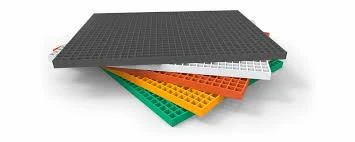
-
 Afrikaans
Afrikaans -
 Albanian
Albanian -
 Amharic
Amharic -
 Arabic
Arabic -
 Armenian
Armenian -
 Azerbaijani
Azerbaijani -
 Basque
Basque -
 Belarusian
Belarusian -
 Bengali
Bengali -
 Bosnian
Bosnian -
 Bulgarian
Bulgarian -
 Catalan
Catalan -
 Cebuano
Cebuano -
 China
China -
 China (Taiwan)
China (Taiwan) -
 Corsican
Corsican -
 Croatian
Croatian -
 Czech
Czech -
 Danish
Danish -
 Dutch
Dutch -
 English
English -
 Esperanto
Esperanto -
 Estonian
Estonian -
 Finnish
Finnish -
 French
French -
 Frisian
Frisian -
 Galician
Galician -
 Georgian
Georgian -
 German
German -
 Greek
Greek -
 Gujarati
Gujarati -
 Haitian Creole
Haitian Creole -
 hausa
hausa -
 hawaiian
hawaiian -
 Hebrew
Hebrew -
 Hindi
Hindi -
 Miao
Miao -
 Hungarian
Hungarian -
 Icelandic
Icelandic -
 igbo
igbo -
 Indonesian
Indonesian -
 irish
irish -
 Italian
Italian -
 Japanese
Japanese -
 Javanese
Javanese -
 Kannada
Kannada -
 kazakh
kazakh -
 Khmer
Khmer -
 Rwandese
Rwandese -
 Korean
Korean -
 Kurdish
Kurdish -
 Kyrgyz
Kyrgyz -
 Lao
Lao -
 Latin
Latin -
 Latvian
Latvian -
 Lithuanian
Lithuanian -
 Luxembourgish
Luxembourgish -
 Macedonian
Macedonian -
 Malgashi
Malgashi -
 Malay
Malay -
 Malayalam
Malayalam -
 Maltese
Maltese -
 Maori
Maori -
 Marathi
Marathi -
 Mongolian
Mongolian -
 Myanmar
Myanmar -
 Nepali
Nepali -
 Norwegian
Norwegian -
 Norwegian
Norwegian -
 Occitan
Occitan -
 Pashto
Pashto -
 Persian
Persian -
 Polish
Polish -
 Portuguese
Portuguese -
 Punjabi
Punjabi -
 Romanian
Romanian -
 Russian
Russian -
 Samoan
Samoan -
 Scottish Gaelic
Scottish Gaelic -
 Serbian
Serbian -
 Sesotho
Sesotho -
 Shona
Shona -
 Sindhi
Sindhi -
 Sinhala
Sinhala -
 Slovak
Slovak -
 Slovenian
Slovenian -
 Somali
Somali -
 Spanish
Spanish -
 Sundanese
Sundanese -
 Swahili
Swahili -
 Swedish
Swedish -
 Tagalog
Tagalog -
 Tajik
Tajik -
 Tamil
Tamil -
 Tatar
Tatar -
 Telugu
Telugu -
 Thai
Thai -
 Turkish
Turkish -
 Turkmen
Turkmen -
 Ukrainian
Ukrainian -
 Urdu
Urdu -
 Uighur
Uighur -
 Uzbek
Uzbek -
 Vietnamese
Vietnamese -
 Welsh
Welsh -
 Bantu
Bantu -
 Yiddish
Yiddish -
 Yoruba
Yoruba -
 Zulu
Zulu
mandrel
The Versatile World of Mandrels
Mandrels play a pivotal role in various manufacturing processes, especially in industries such as metalworking, woodworking, and composite fabrication. A mandrel is a tool used to shape and support materials while they are being machined, molded, or formed. Its versatility and essential function make it a fundamental component for many applications, leading to its widespread use across different trades.
Understanding the Mandrel
At its core, a mandrel is a cylindrical tool that holds objects in place during operations like drilling, grinding, or shaping. It can be made from various materials, including steel, aluminum, and even plastic, depending on the application it is being used for. The size, shape, and configuration of a mandrel can vary significantly; some mandrels are designed for specific tasks while others are adjustable to accommodate different workpieces.
In the metalworking industry, mandrels often serve as support structures for pipes or tubes. They ensure that the material maintains its shape during processes such as bending, where there is a risk of distortion. In this context, a mandrel is inserted inside the tube or pipe, allowing for smooth bends without collapsing the material.
In woodworking, mandrels are utilized in various milling and routing machines. They facilitate the shaping and cutting of wood by providing a stable axis around which the cutter can operate. This application helps achieve precision and uniformity in woodworking tasks.
Types of Mandrels
There are several types of mandrels designed for specific applications. One common type is the collet mandrel, which is used to hold cylindrical workpieces securely while they are shaped or cut. Collet mandrels can grip materials with high precision, making them ideal for high-speed machining operations.
mandrel

Another important type is the expanding mandrel, which is particularly useful in situations where the workpiece may be fragile. This mandrel expands to fit the internal diameter of the material, providing support without the risk of deformation. This feature is crucial when dealing with composite materials, which can be sensitive to excessive pressure.
The use of tapered mandrels is also prominent, especially in automotive and aerospace industries. These mandrels allow for the performance of certain machining tasks that require the workpiece to be mounted at an angle. The tapering helps with the alignment and stability of the workpiece during such operations.
Innovations and Future Prospects
As technology continues to evolve, so do the designs and functionalities of mandrels. Recent advancements in materials science have led to the development of lightweight and stronger mandrels that can withstand higher operational stresses. Additionally, the integration of digital technologies, such as CNC (Computer Numerical Control) machining, has allowed for more intricate and precise mandrel designs.
Manufacturers are paying more attention to customization, enabling mandrels to be tailored specifically for unique applications. This shift not only enhances efficiency but also minimizes wastage, as companies look for ways to streamline their production processes.
Conclusion
Mandrels are integral tools that enhance the quality and precision of various manufacturing operations. Their adaptability across different industries—ranging from metalworking to woodworking—highlights their importance in today's fast-paced production environments. As innovations continue to unfold, we can expect mandrels to play an even more significant role in shaping the future of manufacturing, ensuring that they remain an essential component of modern engineering and craftsmanship. Whether in a factory or a workshop, the humble mandrel continues to be a vital tool that drives efficiency and excellence.









